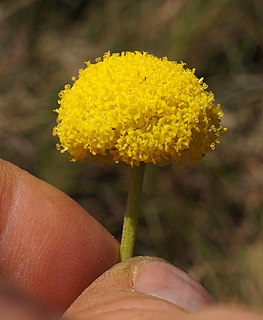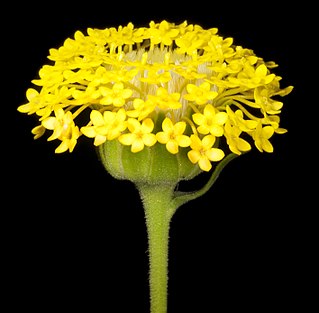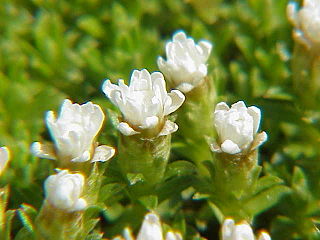
The Gnaphalieae are a tribe of flowering plants in the family Asteraceae. It is most closely related to the tribes Anthemideae, Astereae, and Calenduleae.

Craspedia is a genus of flowering plants in the family Asteraceae commonly known as billy buttons and woollyheads. They are native to Australia and New Zealand where they grow in a variety of habitats from sea level to the Alps. The genus is found in every state of Australia except the Northern Territory. In New Zealand, Craspedia is found from East Cape on the North Island south to Stewart Island. It also occurs on Campbell Island and the Chatham Islands.

Arthropodium is a genus of herbaceous perennial plants in the subfamily Lomandroideae of the family Asparagaceae. It is native to Australia, New Zealand, New Caledonia and Madagascar.

Waitzia is a genus of Australian plants in the everlasting-daisies within the sunflower family. The genus is native to Australia, where it grows in Western Australia, the Northern Territory, New South Wales, Victoria and South Australia.
- Waitzia acuminataSteetz - orange immortelle
- Waitzia corymbosaJ.C.Wendl.
- Waitzia nitida(Lindl.) Paul G.Wilson - golden waitzia
- Waitzia podolepis(Gaudich.) Benth.
- Waitzia suaveolens(Benth.) Druce - fragrant waitzia

Centrolepis is a genus of small herbaceous plants in the family Restionaceae known as thorn grass scales, with about 25 species native to Australia, New Zealand, New Guinea, and south-east Asia as far north as Hainan Dao. APG III system classifies this genus in the Centrolepidaceae family.

Ammobium is genus of perennial Asteraceae species described as a genus in 1824 by Robert Brown, with the type species being Ammobium alatum.

Gahnia is a genus of sedges native to China, Southeast Asia, New Guinea, Australia, New Zealand and a number of Pacific Islands. The common name is due to the toothed margins. It often forms tussocks.

Podotheca is a genus of flowering plants in the pussy's-toes tribe (Gnaphalieae) within the Asteraceae. All species are endemic to Western Australia, except for Podotheca angustifolia which occurs across the south of Australia.

Leptinella is a genus of alpine flowering plant in the family Asteraceae, comprising 33 species, distributed in New Guinea, Australia, New Zealand, South Africa, and South America. Many of the species are endemic to New Zealand.

Damnamenia is a genus of flowering plants in the sunflower family.

Rayjacksonia is a genus of North American flowering plants in the daisy family, Asteraceae. It is one of several genera with the common name tansyaster.
Stuartina is a genus of small annual herbs in the pussy's-toes tribe within the sunflower family, native to Australia.

Amphibromus is a genus of grasses in the family Poaceae. Most are known as swamp wallaby grass. Most are endemic to Australia. One can also be found in New Zealand and there are two species in South America.
Elachanthus is a genus of Australian flowering plants in the daisy family.

Euchiton is a genus of flowering plants in the family Asteraceae. They are native to Australasia and the Pacific. Some have been introduced far outside their native ranges.
Solenogyne is a genus of Australian plants in the aster tribe within the daisy family.

Isoetopsis is a genus of Australian flowering plants in the daisy family.

Raoulia is a genus of New Zealand plants in the pussy's-toes tribe within the daisy family.
Parantennaria is a genus of Australian plants in the pussy's-toes tribe within the sunflower family.
Misbrookea is a genus of South American plants in the groundsel tribe within the sunflower family. The genus is named in honour of Miss Winifred M. A. Brooke.














